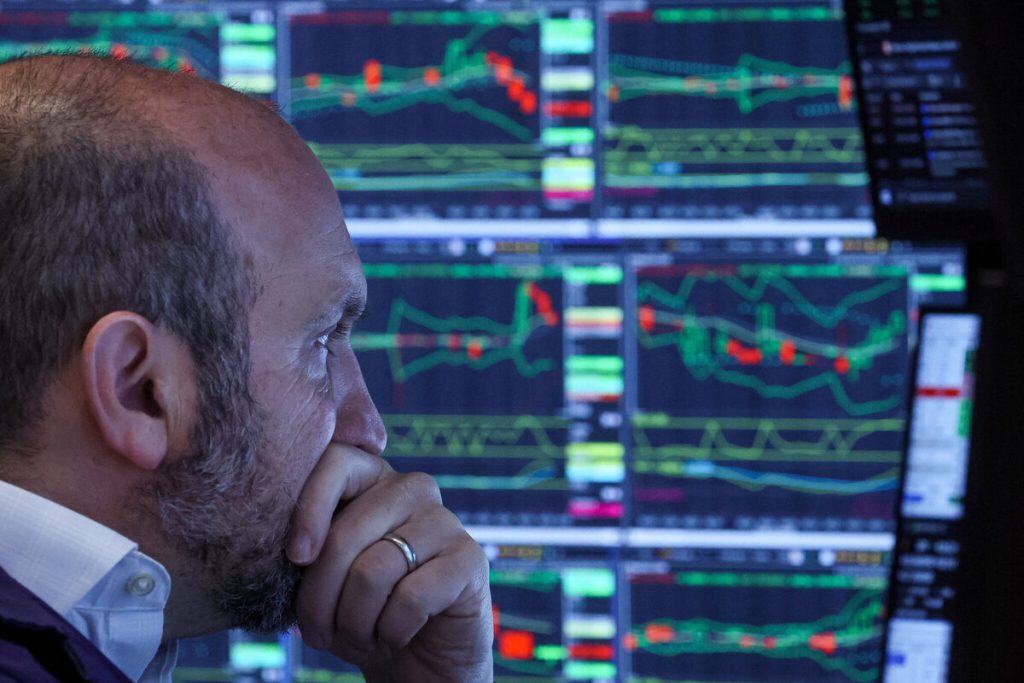
Gold Price Remains Above $2,300 as Core PCE Inflation Data Looms
24/06/2024
The Basics of Currency Pairs: A Comprehensive Guide
11/07/2024Introduction to Forex Trading: A Comprehensive Guide
What is Forex Trading?
Forex trading, also known as foreign exchange trading or currency trading, is the global marketplace for buying and selling currencies. It is one of the largest and most liquid markets in the world, with an average daily trading volume exceeding $6 trillion. Forex trading allows individuals, businesses, and institutions to speculate on currency movements, hedge against currency risks, and diversify their investment portfolios.

The Basics of Forex Trading
Currency Pairs
In the Forex market, currencies are traded in pairs. Each currency pair consists of a base currency and a quote currency. The base currency is the first currency listed in the pair, while the quote currency is the second. For example, in the EUR/USD pair, the euro (EUR) is the base currency, and the US dollar (USD) is the quote currency. The price of the pair represents how much of the quote currency is needed to purchase one unit of the base currency.
Major, Minor, and Exotic Pairs
Forex currency pairs are categorized into three main groups: major pairs, minor pairs, and exotic pairs.
- Major Pairs: These are the most traded currency pairs in the Forex market. They include EUR/USD, GBP/USD, USD/JPY, and USD/CHF. Major pairs typically have high liquidity and low spreads.
- Minor Pairs: These pairs do not include the US dollar but involve other major currencies. Examples include EUR/GBP, EUR/AUD, and GBP/JPY. Minor pairs usually have lower liquidity and higher spreads than major pairs.
- Exotic Pairs: Exotic pairs consist of one major currency and one currency from a developing or emerging market. Examples include USD/TRY (US dollar/Turkish lira) and USD/SEK (US dollar/Swedish krona). Exotic pairs generally have lower liquidity and higher spreads, making them more volatile and riskier to trade.

How Forex Trading Works
Forex trading operates on a decentralized market, meaning there is no central exchange or physical location where trades occur. Instead, trading is conducted electronically over-the-counter (OTC) through a network of banks, brokers, and financial institutions.
Trades in the Forex market are executed through trading platforms provided by brokers. These platforms offer access to real-time price quotes, charts, and various trading tools to help traders make informed decisions.
Bid and Ask Price
Every Forex quote consists of two prices: the bid price and the ask price. The bid price is the price at which the market (or your broker) is willing to buy a specific currency pair. The ask price is the price at which the market (or your broker) is willing to sell the same pair. The difference between the bid and ask prices is known as the spread.
Leverage and Margin
Leverage is a powerful tool in Forex trading that allows traders to control a larger position size with a smaller amount of capital. It is expressed as a ratio, such as 100:1, which means that for every $1 of capital, a trader can control $100 worth of currency. While leverage can amplify profits, it also increases the risk of significant losses.
Margin is the amount of money required to open a leveraged position. It is essentially a security deposit held by the broker to cover potential losses. The required margin depends on the leverage ratio and the size of the trade.
The Benefits of Forex Trading
High Liquidity
The Forex market is the most liquid financial market in the world. High liquidity means that large trades can be executed quickly and with minimal price slippage. This is particularly advantageous for traders, as it ensures that orders are filled at the desired prices.
24-Hour Market
Unlike other financial markets, the Forex market operates 24 hours a day, five days a week. This continuous operation allows traders from around the world to participate in the market at any time. The market is divided into four main trading sessions: the Sydney session, the Tokyo session, the London session, and the New York session. Each session has its own unique characteristics and trading opportunities.
Leverage
As mentioned earlier, leverage allows traders to control large positions with a relatively small amount of capital. This can magnify profits on successful trades. However, it is important to use leverage responsibly and be aware of the increased risk it entails.
Low Transaction Costs
Forex trading typically involves low transaction costs. Most brokers charge a small spread on trades, which is the difference between the bid and ask prices. Some brokers may also charge a commission, but this is generally minimal compared to other financial markets.
Diverse Trading Opportunities
The Forex market offers a wide range of trading opportunities. Traders can choose from various currency pairs, each with its own unique characteristics and market behavior. Additionally, the Forex market is influenced by a multitude of factors, such as economic indicators, geopolitical events, and market sentiment, providing numerous opportunities for profit.

Fundamental Analysis in Forex Trading
Economic Indicators
Fundamental analysis involves evaluating the economic, social, and political factors that influence currency prices. Key economic indicators that impact the Forex market include:
- Gross Domestic Product (GDP): A measure of a country’s economic output and growth. A strong GDP indicates a healthy economy, which can boost the value of its currency.
- Employment Data: Employment reports, such as the Non-Farm Payroll (NFP) in the US, provide insights into the labor market. High employment rates typically strengthen a currency.
- Inflation: Inflation measures the rate at which prices for goods and services rise. Central banks use inflation data to make decisions about interest rates. Higher inflation often leads to higher interest rates, which can appreciate the currency.
- Interest Rates: Central bank interest rate decisions are crucial for Forex traders. Higher interest rates attract foreign investors seeking higher returns, increasing demand for the currency.
- Trade Balance: The difference between a country’s exports and imports. A positive trade balance (surplus) indicates more exports than imports, which can strengthen the currency.
Geopolitical Events
Political stability and geopolitical events significantly impact currency prices. Elections, government policies, international conflicts, and trade agreements can create volatility in the Forex market. Traders closely monitor news and events to anticipate market movements.
Central Bank Policies
Central banks, such as the Federal Reserve, the European Central Bank, and the Bank of Japan, play a critical role in the Forex market. Their policies, including interest rate decisions, quantitative easing programs, and monetary policy statements, influence currency values. Traders analyze central bank communications to predict future market trends.
Technical Analysis in Forex Trading
Chart Types
Technical analysis involves studying historical price data to identify patterns and make trading decisions. Common chart types used in technical analysis include:
- Line Charts: Simple charts that connect closing prices over a specified period. They provide a clear view of the overall trend.
- Bar Charts: Charts that display the open, high, low, and close prices for each period. They offer more information than line charts.
- Candlestick Charts: Similar to bar charts, but with a more visually appealing format. Candlesticks show the open, high, low, and close prices, with different colors indicating bullish or bearish periods.
Key Technical Indicators
Technical indicators are mathematical calculations based on price, volume, or open interest. They help traders identify trends, momentum, and potential reversal points. Popular technical indicators include:
- Moving Averages (MA): Average price data over a specified period. Moving averages smooth out price fluctuations and highlight trends. Common types include Simple Moving Average (SMA) and Exponential Moving Average (EMA).
- Relative Strength Index (RSI): Measures the speed and change of price movements. RSI values above 70 indicate overbought conditions, while values below 30 indicate oversold conditions.
- Bollinger Bands: Consist of a middle band (SMA) and two outer bands representing standard deviations. Bollinger Bands help identify volatility and potential price reversals.
- Moving Average Convergence Divergence (MACD): A trend-following momentum indicator that shows the relationship between two moving averages. The MACD line crossing above the signal line indicates a bullish signal, while crossing below indicates a bearish signal.
- Fibonacci Retracement: Based on the Fibonacci sequence, this tool helps identify potential support and resistance levels. Traders use Fibonacci retracement levels to anticipate price corrections within a trend.

Chart Patterns
Chart patterns are formations created by price movements on a chart. They provide insights into potential future price movements. Common chart patterns include:
- Head and Shoulders: A reversal pattern indicating a trend change. It consists of a peak (head) between two lower peaks (shoulders).
- Double Top and Double Bottom: Reversal patterns indicating a trend change. A double top forms after an uptrend, signaling a bearish reversal, while a double bottom forms after a downtrend, signaling a bullish reversal.
- Triangles: Continuation patterns that indicate a period of consolidation before the trend resumes. Types include ascending, descending, and symmetrical triangles.
- Flags and Pennants: Continuation patterns that form after a strong price movement. Flags are rectangular-shaped, while pennants are small symmetrical triangles.
Developing a Forex Trading Strategy
Setting Goals and Risk Tolerance
Before developing a trading strategy, it is essential to set clear goals and determine your risk tolerance. Consider factors such as your investment capital, time commitment, and financial objectives. Understanding your risk tolerance will help you make informed decisions and avoid emotional trading.

Choosing a Trading Style
There are various trading styles in Forex, each with its own time frame and approach. Common trading styles include:
- Scalping: Involves making numerous short-term trades to capture small price movements. Scalpers hold positions for seconds to minutes.
- Day Trading: Involves opening and closing trades within the same day. Day traders capitalize on intraday price movements and avoid overnight risks.
- Swing Trading: Involves holding trades for several days to weeks. Swing traders aim to capture medium-term price swings within a trend.
- Position Trading: Involves holding trades for weeks to months. Position traders focus on long-term trends and fundamental analysis.
Creating a Trading Plan
A trading plan is a detailed outline of your trading strategy, including your goals, risk management rules, and trading methodology. Key components of a trading plan include:
- Entry and Exit Rules: Define the criteria for entering and exiting trades. This can be based on technical indicators, chart patterns, or fundamental analysis.
- Risk Management: Establish rules for managing risk, such as setting stop-loss and take-profit levels. Determine the maximum amount of capital you are willing to risk on each trade.
- Position Sizing: Determine the size of each trade based on your risk tolerance and account balance. Position sizing helps manage risk and prevent significant losses.
- Record Keeping: Maintain a trading journal to track your trades, analyze performance, and identify areas for improvement. Recording your trades helps you learn from your successes and mistakes.

Choosing a Forex Broker
Factors to Consider
Choosing the right Forex broker is crucial for successful trading. Key factors to consider when selecting a broker include:
- Regulation: Ensure the broker is regulated by a reputable financial authority, such as the Financial Conduct Authority (FCA) or the Commodity Futures Trading Commission (CFTC). Regulation provides a level of security and protection for your funds.
- Trading Platform: Evaluate the broker’s trading platform for ease of use, reliability, and available features. Popular trading platforms include MetaTrader 4 (MT4), MetaTrader 5 (MT5), and cTrader.
- Spreads and Commissions: Compare the spreads and commissions charged by different brokers. Lower spreads and commissions can reduce your trading costs and increase profitability.
- Customer Support: Assess the quality of customer support offered by the broker. Responsive and knowledgeable customer support can assist you with any issues or questions.
- Account Types: Check the different account types available and their respective features, such as minimum deposit requirements, leverage options, and additional services.
Opening a Forex Trading Account
To start trading Forex, you need to open a trading account with a broker. The process typically involves the following steps:
- Registration: Complete the online registration form on the broker’s website, providing your personal information and contact details.
- Verification: Submit the required identification documents, such as a government-issued ID and proof of address, for verification.
- Funding: Deposit funds into your trading account using your preferred payment method, such as a bank transfer, credit/debit card, or electronic wallet.
- Download Platform: Download and install the trading platform provided by the broker. Alternatively, you can use the web-based version if available.
- Start Trading: Once your account is funded and the platform is set up, you can start trading by analyzing the market and executing trades.
Conclusion
Forex trading offers a world of opportunities for those willing to learn and develop their skills. By understanding the basics of Forex trading, analyzing the market through fundamental and technical analysis, and developing a sound trading strategy, you can navigate the Forex market with confidence. Remember to choose a reputable broker, manage your risks effectively, and continuously improve your trading knowledge. With dedication and discipline, you can achieve success in the exciting world of Forex trading.
-
Introduction to Forex Trading: A Comprehensive Guide
Introduction to Forex Trading: A Comprehensive Guide What is Forex Trading? Forex trading, also known as foreign exchange trading or currency trading, is the global marketplace […]
thecoins24 bitcoin news about ethereum cryptocurrency airdrop cryptocurrency News Learning Cryptocurrency Gototrip go to France Go to italy go to spain go to china Aypa Group Aypa Web design Aypa SEO Aypa Digital marketing
تحصیل در ایتالیا تحصیل رایگان در ایتالیا پذیرش تحصیلی ایتالیا بورسیه تحصیلی ایتالیا دانشگاه های ایتالیا کارشناسی ارشد در ایتالیا پزشکی درایتالیا
GoToTrip Go To Italy Go To France Go To Spain Go To Africa Go to Asia




